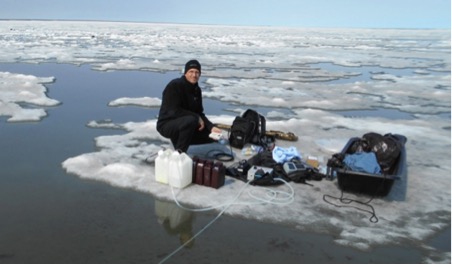
Photo Credit: Kenneth Dunton, Marine Science Institute, The University of Texas at Austin
Research Project Full Title: Beaufort Lagoon Ecosystems – Long Term Ecological Research
Principal Investigator(s): Ken Dunton, James McClelland
Researchers: Tim Whiteaker
Sponsor(s): National Science Foundation
Full Abstract: This project will establish a new Long Term Ecological Research (LTER) site along the Alaskan Arctic coastline. Research based out of Utqiagvik (formerly Barrow), Deadhorse, and Kaktovik will address how changes in shoreline erosion and freshwater inflows to the coastal ocean over seasonal, annual, and longer timeframes influence near-shore food webs. Research will be conducted in collaboration with local stakeholder groups and the U.S. Fish and Wildlife Service.
Recent studies suggest that the ecological framework for understanding what controls food web structure needs to be expanded to include temporal forcing. More specifically, there is mounting evidence that differential availability of seasonally-distinct resources is critical for defining trophic linkages and maintaining stability and resilience of food webs. This new LTER program will use lagoons along the Alaskan Beaufort Sea coast as experimental units to test this concept, and broaden it to include temporal variations over longer timeframes. The Beaufort lagoons are ideal for testing this concept because they experience extreme variability in seasonal cycles, which are now subject to rapid directional shifts driven by climate change. In addition, barrier island geomorphology, which exerts a strong control on water exchange between lagoons and the open ocean, is highly dynamic in the Arctic because sea-ice effects on coastal geomorphology are superimposed on the effects of currents, sea level, and waves. Thus, connections between inputs from land and lagoon ecosystems are more direct, and water exchanges between lagoons and the open ocean are more variable than is typical of lower latitude systems. The LTER will include seasonal field work during ice covered, ice break-up, and open water periods and also include sensor deployments for continuous measurements of key biogeochemical and hydrographic parameters.
Additional Links: https://ble.lternet.edu/
